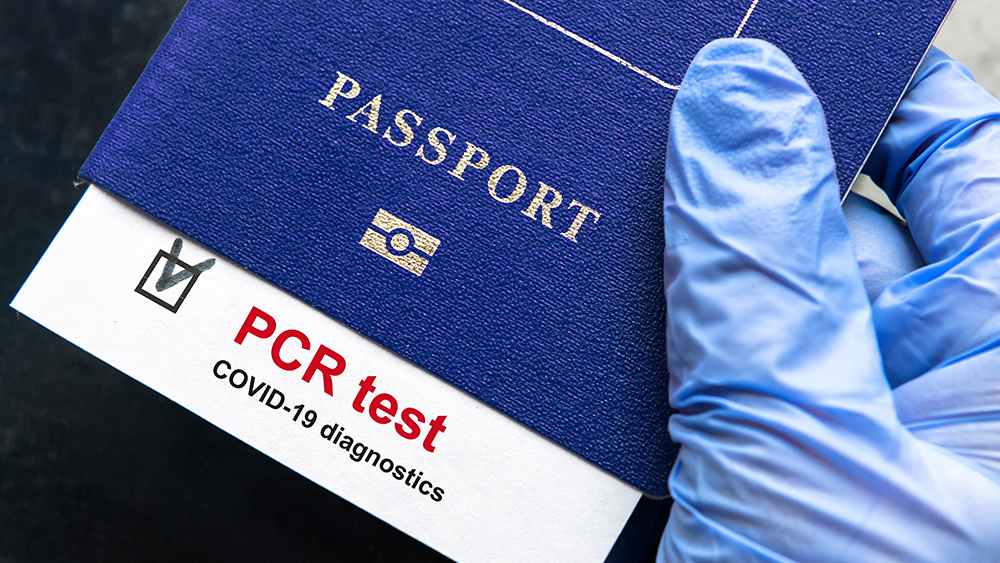USDA using unreliable PCR testing to “depopulate” poultry farms, crippling the U.S. food supply
04/07/2024 / By Lance D Johnson

“Out of an abundance of caution,” the United States Department of Agriculture (USDA) has been “depopulating” poultry farms whenever a hen tests positive for avian influenza. These government-enforced depopulation schemes target millions of egg-laying hens, decimating large flocks of harmless animals.
The Michigan Department of Agriculture and Rural Development recently reported that a few birds tested positive for avian influenza at a major Michigan poultry facility. The birds at this facility were put under quarantine and scheduled to be killed, en masse. Herbruck’s Poultry Ranch recently had a few hens test positive at their Green Meadow Organics facility, and entire flocks will be culled because of it. This is an issue that is occurring at greater frequency across the country. PCR fallibility and disease pandemonium allows government agencies to cull entire flocks, driving food price inflation and putting the food supply at risk.
Overzealous laws allow USDA to cull millions of harmless animals
Factory farms are notorious for raising chickens in unhealthy, crowded environments that do not consider the holistic health of the animals. This often causes the chickens to become more susceptible to sickness and more likely to spread infections. The animals are not allowed to roam freely and develop proper immunity to the pathogens in their environment. These animals are often subject to conditions, drugs and vaccines that further weaken their ability to adapt to disease. Instead of allowing chicken populations to gain natural immunity, the government depopulates entire flocks and puts the next generation of chickens at greater risk, due to waning herd immunity from generation to generation.
To make matters worse, the USDA requires poultry farmers to use real time-quantitative PCR (RT-qPCR) technology to determine whether a sick animal harbors avian influenza. If an animal tests positive, the producer must quarantine their flocks out of an abundance of caution and work with the state to come up with a “depopulation plan.” The depopulation plan typically involves killing millions of animals that aren’t even infected, to allegedly protect the herd from a pandemic strain.
On April 2, 2024, Cal-Maine Foods agreed to depopulate 1.6 million laying hens and 33,700 pullets at their facility in Parmer County, Texas. Some of the birds tested positive for H1N5 – one of the strains of highly pathogenic avian influenza that the latest PCR tests are calibrated to amplify.
Last year, Cal-Maine Foods agreed to cull 1.6% of its flock at one of their Kansas facilities. Several companies across the country have culled millions of chickens throughout 2022-2024. These broad, hasty actions are harming the U.S. food supply and causing the price of animal meat to go up, as meat and egg supplies are threatened.
Under § 56.5, the Animal and Plant Health Inspection Service of the USDA requires the destruction and disposal and cleaning and disinfection (virus elimination) of premises, conveyances and materials, when an animal tests positive for avian influenza.
Poultry that are infected with or exposed to H5/H7 LPAI may be required to be destroyed at the discretion of the Cooperating State Agency and [the USDA] Animal Health and Plant Inspection Service and in accordance with the initial State response and containment plan described in § 56.10.”
PCR sensitivity, fallibility, and its role in decimating the U.S. food supply
The traditional method of diagnosing hens with avian influenza involves intentional infection of embryonated eggs with samples taken directly from the trachea or cloacae of avian species. This method allows for the proper sub-typing of the influenza A virus. However, a more expedient diagnostic method has been introduced over the past two decades.
The polymerase chain reaction (PCR) is an alternative diagnostic method that allows for rapid and sensitive detection. This method uses nucleic acids from blood or tissue samples and analyzes them for the presence of molecules specific to bird flu.
This method amplifies pieces of genetic material from viruses that may be left behind in tissue samples from previously sick animals. However, these amplifications may not always differentiate between serious avian influenza infections and benign infections that have no symptoms or mild symptoms of illness that could confer greater immunity throughout the herd.
These PCR amplifications may deliver a “positive” result, even after the organism has overcome an infection and has immunity. It’s well known that low pathogenicity avian influenza (LPAI) virus strains occur naturally in wild migratory waterfowl and shorebirds, without causing illness, but PCR could misdiagnose these benign cases as serious cases, leading to mass quarantine and culling of animals.
Moreover, companies are developing new PCR-based assays that encompass a broad selection of AIV subtypes, which increase the positive case count overall. For instance, scientists have been developing subtype-specific multiplex reverse transcription-polymerase chain reaction (RT-PCR) tests to increase sensitivity to specific subtypes of the avian influenza virus type A (notably H5, H7 and H9). The laboratories may also use elevated cycle thresholds to inevitably generate more positives for leftover viral debris that is not infectious or is unrelated to the highly pathogenic strains.
These higher rates of false positives are the result of “improvements” to PCR tests that are designed to make the tests more sensitive to viral debris. “Improvements” over the last decade include changes in the individual components of the enzymatic reaction cocktail (polymerizing enzymes, reaction buffers, probes, etc.) to the detection system itself (instrumentation, software, etc.).
According to a research abstract published in Current Issues of Molecular Biology, “the RT-qPCR technology currently available to researchers is more sensitive, faster and affordable than when this technology was first introduced.” These PCR tests have become a business, a tool of uncertainty and deception. Because of this, the tests could be calibrated to cause disruptions in the food supply, or be used in a way that warrants greater surveillance of a population and therefore more PCR sales and data capture.
The increases in PCR sensitivity, combined with the USDA’s rules for decimating flocks that are nearby a few sick hens, creates a perfect storm for the unnecessary mass depopulation of animals. This is an issue that threatens millions of animals on a yearly basis, driving up the price of meat and eggs, and threatening the U.S. food supply.
Sources include:
Submit a correction >>
Tagged Under:
amplification cycles, animal health, animal immunity, avian influenza, benign infections, big government, conspiracy, contagion, depopulation, engineered famine, famine, food collapse, food inflation, food supply, outrage, pandemonium, PCR, PCR scam, PCR sensitivity, scarcity, science deception, starvation, supply chain, testing positive, US food supply, USDA, USDA reform, virus elimination, virus sub-typing, world agriculture
This article may contain statements that reflect the opinion of the author
RECENT NEWS & ARTICLES
COPYRIGHT © 2017 JUNK SCIENCE WATCH



















